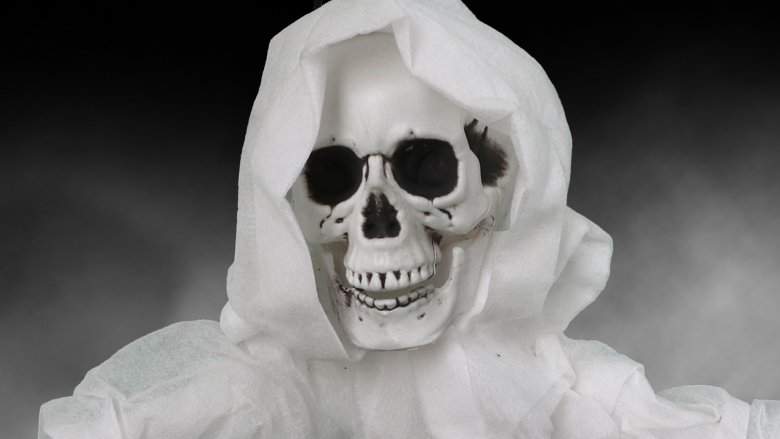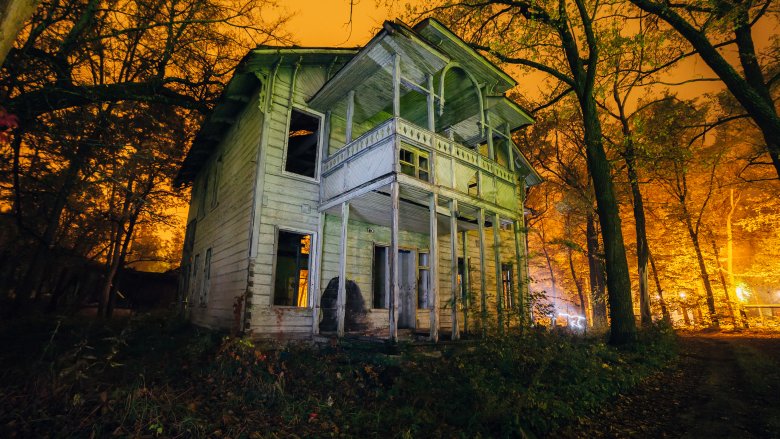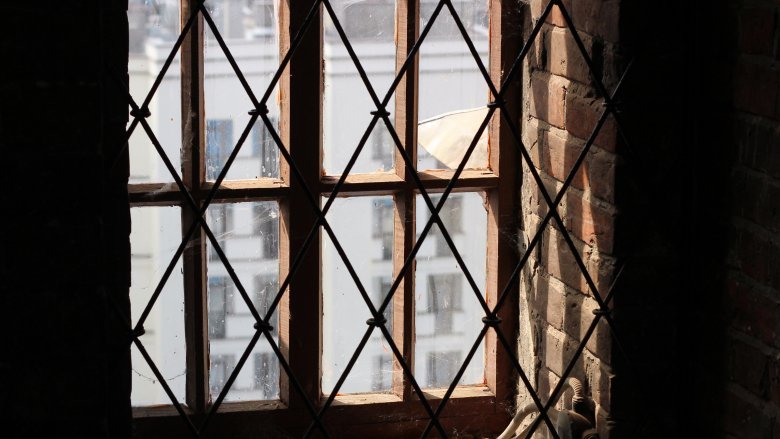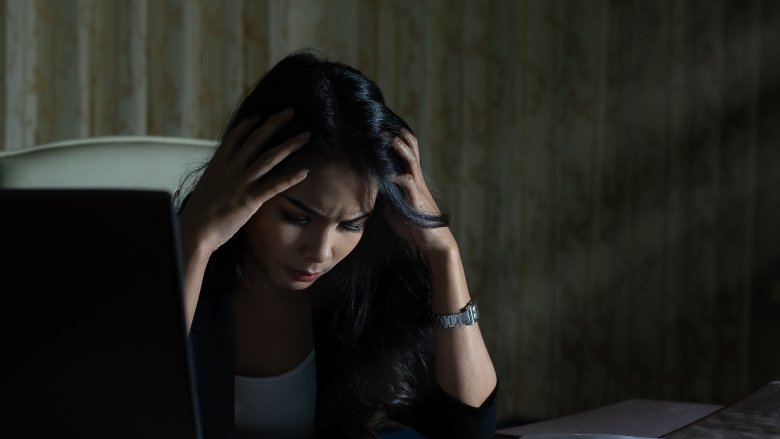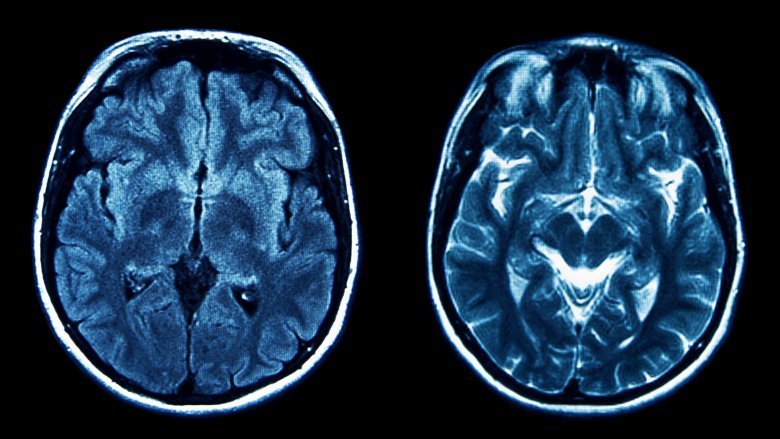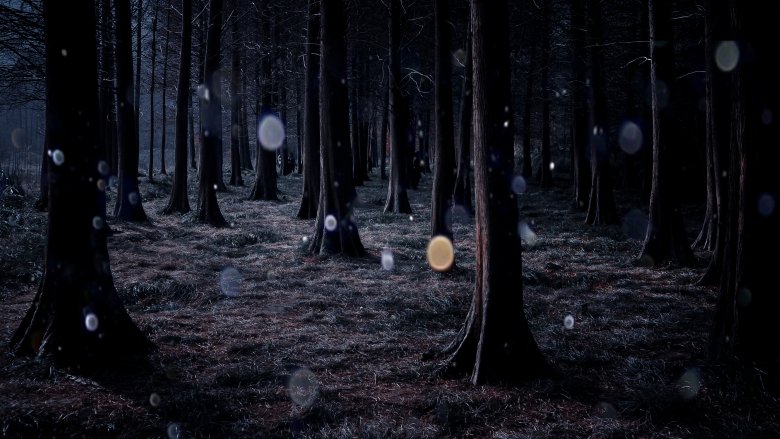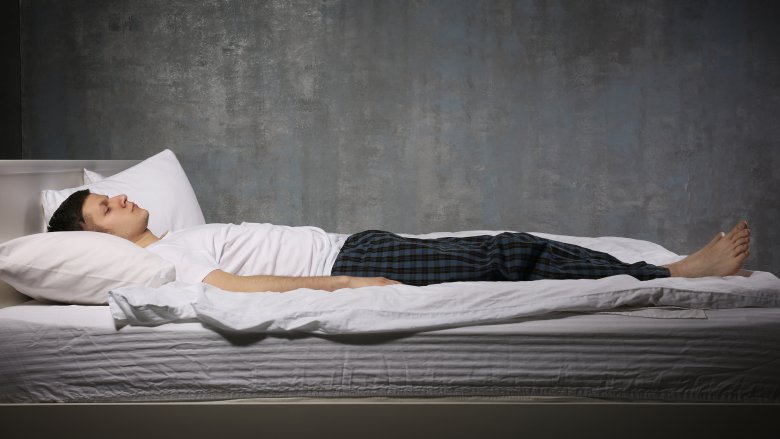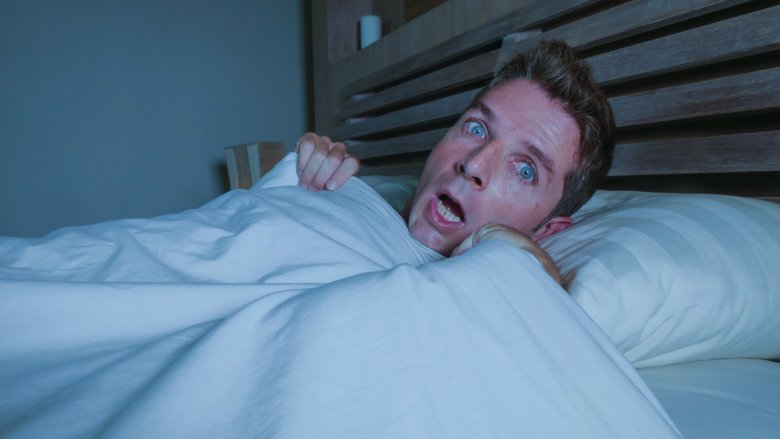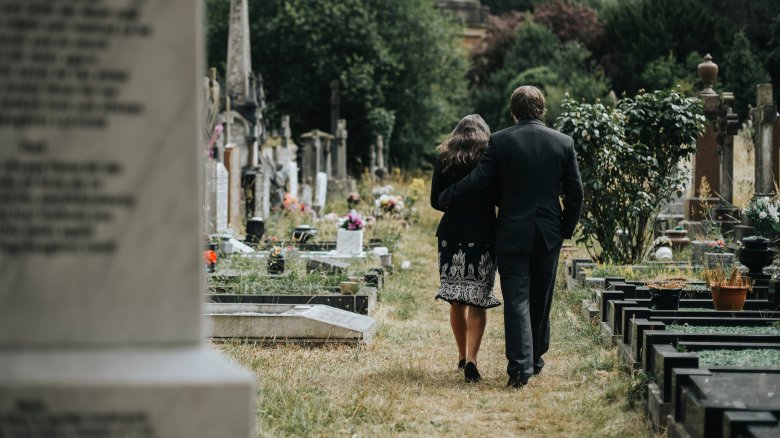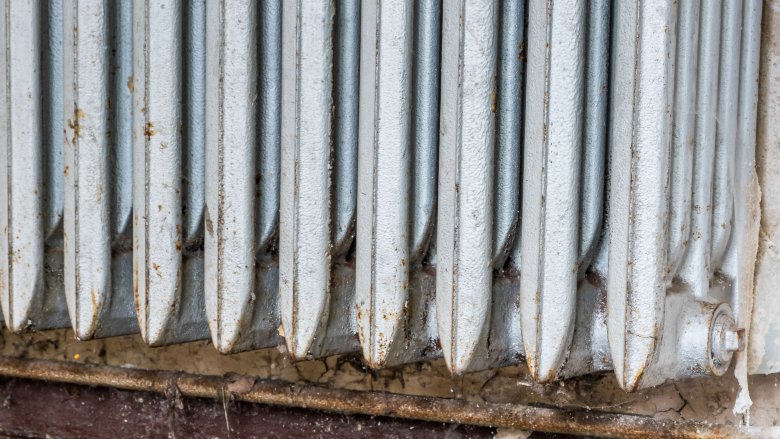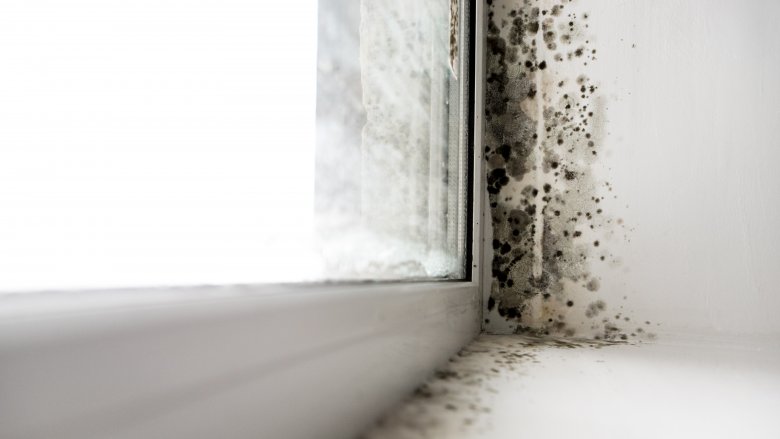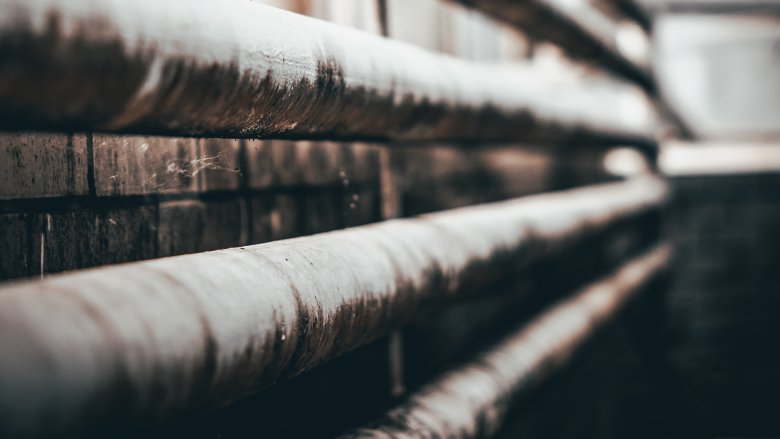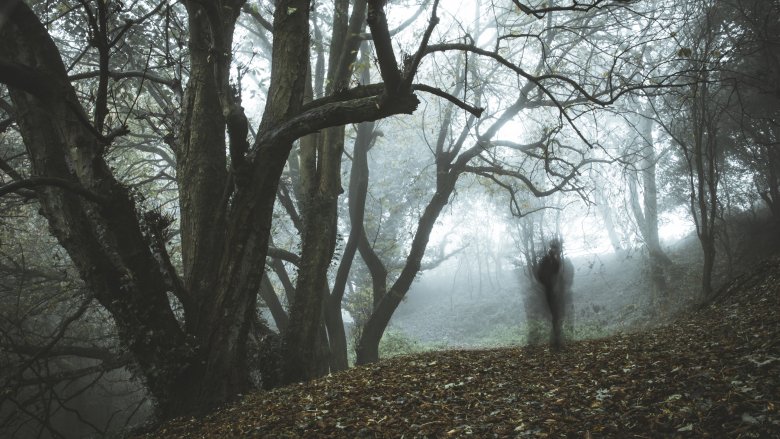Why People See Ghosts, According To Science
Dear scientists, we love learning about nanotechnology and flashlight fish and breakthroughs in medicine, because that stuff is fascinating and world-changing and it satisfies the human desire to better understand our world. But really, scientists, can't you just leave ghosts alone already? Because believing in ghosts doesn't hurt anyone, and in some cases it actually helps people, and also it's fun.
But nooo, scientists can't resist endlessly telling us how wrong we are about why people see ghosts. It's all in our heads, they say. It's reflections and mold and infrasound and blah blah blah science science. Well, we're here to say that dang it, some of the scientific explanations for ghost encounters actually sound pretty convincing. But that doesn't mean you still can't choose to believe. And for every paranormal encounter that can be explained away by one of the items on this list, there's probably another one that totally defies explanation. So skeptics rejoice and everyone else, feel free to read about all the dumb science of why people see ghosts with skepticism.
Ghosts are down to the power of suggestion
If you're a believer in the paranormal and someone tells you that the house or hotel or bookstore you're about to enter is haunted, you're more likely to have a paranormal experience (or at the very least some creepy feelings) when you walk into that place. Yeah, that makes sense. It makes so much sense, in fact, that we don't really need a study to tell us it's true, but alas, we got one anyway.
In 1997, researchers put 22 people into a creepy theater and told them to make observations. Half of the subjects were told the theater was haunted, and the other half were told that it was under construction. Predictably, the half who thought they were visiting a haunted theater were more likely to report "more intense perceptual experiences," which is presumably science-speak for seeing or sensing the presence of something other-worldly.
So those results seem to suggest that paranormal experiences happen mostly because people have been led to believe they might happen. In other words, good old fashioned paranoia. Which by the way is also why it took you six months to stop sleeping with the lights on and a blanket over your television screen the first time you watched The Ring.
Ghosts are just a draft
Paranormal investigators often talk about "cold spots," but so-called haunted houses do tend to be old and old buildings do tend to be drafty. So just because you've walked through a cold spot doesn't necessarily mean you've violated the personal space of a spirit.
According to the party-poopers at How Stuff Works, cold spots are probably a natural phenomena. When researchers actually try to find a reason for a temperature change, it can usually be traced to something like a chimney or a drafty window. The sensation of a sudden drop in temperature can also be related to a drop in humidity — that's what Richard Wiseman concluded at the end of his famous study into the hauntings at Mary King's Close (though that doesn't explain the other things his subjects experienced, like an apparition in a leather apron and the sensation of having your clothes tugged on).
Incidentally, this particular study and another one he conducted in 2003 found that subjects tended to have more paranormal experiences in the rooms and vaults that were famously haunted, vs. those where no one had ever reported ghostly encounters — even when they weren't informed ahead of time which was which. So as far as that previous power-of-suggestion study is concerned, well, plft. Although Wiseman also suggested that the paranormal experiences people had in these places could have something to do with natural phenomena like magnetic fields and lighting levels. So that's no fun. No fun at all.
Ghosts might appear because you're stressed out
So then some researchers published a paper called "Supernatural Agency: Individual Difference Predictors and Situational Correlates" because big words make you sound smart. Anyway, this particular paper suggested that people who have paranormal experiences tend to be more open to the idea of spiritual experiences in general, and also have "thinner mental boundaries" and higher empathy scores. It also found that people in "threatening and ambiguous environment[s]," are more prone to having non-religious paranormal experiences. In other words, instead of seeing an angel or talking to God, a person experiencing environmental stress might see a shadow figure or a full-bodied apparition.
That research has been backed up by other studies, including one that specifically looked at whether stress can cause women to report paranormal experiences. This study looked at a group of women in a town in central eastern Turkey, and determined that women who suffered trauma in childhood or had post-traumatic stress disorder were more likely to say they'd experienced things like possession, precognition, and extra-sensory perception.
Ghosts could be a brain malfunction
Who amongst us doesn't love to be told we're suffering from a brain malfunction? According to the Pew Research Center, about 18% of Americans say they've seen a ghost, so if this particular theory is true, it means roughly one in five of us have a malfunctioning brain. Awesome.
In 2006, a neurologist in Switzerland was attempting to isolate the part of the brain responsible for a 23-year-old woman's seizures when he blundered into a strange phenomenon. When he applied current through a certain part of her brain, she told him she sensed a mysterious, shadowy person standing behind her. Even more creepy, the shadow person was mimicking her — every time she moved, he would move. Some scholars think that researchers were simply stimulating the part of the brain that's responsible for that creepy feeling you sometimes get that you are being watched or followed by something that isn't there.
But wait, there's more. Research using a device called "the God helmet," which sends magnetic signals to the wearer's head, showed that a person can be artificially induced to feel like there is a ghostly presence in the room. And if you want all that summed up, well the BBC said it nice and bluntly: "Some paranormal experiences are easily explainable, based on faulty activity in the brain." The author then goes on to explain how poltergeist activity corresponds nicely with damage to the right hemisphere. Thanks for clearing that up, wise ones.
Orb photos are just a trick of the light
Orb photography, on the other hand, is total bunk. Science can have that one.
You've almost certainly seen examples of this sort of "proof" of the paranormal — a photo of an otherwise innocuous person, place or thing that contains eerie looking balls of light, also known as spirit orbs. Similar manifestations can be seen on your favorite ghost hunting shows (hint: They're insects. They're totally insects.) As far as those creepy orbs are concerned, though, even websites dedicated to ghostly encounters, like Colonial Ghosts, will often write off orb photos as total bunk. So if they're not spirit orbs, then, what are they?
The orbs that appear in photographs are usually just specs of dust or pollen, insects, moisture in the air, or something on the camera's lens. When the photographer engages the flash, these things reflect the light and create the image of a large, creepy-looking ball of ectoplasm. The phenomena is actually exacerbated by modern camera design — the closer the flash is to the camera's lens, the easier it will be for the light to reflect off of particles in the air, and the more likely it is that the camera will capture something that can be mistaken for a ghost. Sorry to be an active participant in all the party pooping, but that's just a technological truth.
Ghostly encounters are common during sleep paralysis
If you've ever fallen asleep in front of an especially boring episode of Law & Order, you may have experienced a phenomenon known as "sleep paralysis." If not, well, Newsweek says it's basically a state where "features of REM sleep continue into waking life." When you experience sleep paralysis, you'll be deep in the REM dream state, but then you'll half-wake and experience a sort of hybrid state of consciousness, where you're still experiencing dreamlike hallucinations. And just so the whole thing will be that much more terrifying, you also won't be able to move.
Paralysis is actually necessary for safe REM sleep — it happens mostly so you won't punch your spouse in the face while acting out your Fight Club dream. But when you experience it in a state of near-wakefulness, it can be really scary. Add a few dream demons to the mix, and it can feel like a genuine paranormal experience.
Sleep paralysis is actually common — about 8 percent of us will report experiencing it at least once and for some people, it's a regular thing. But those feelings of a ghost at the end of the bed are just a feature of sleep paralysis, they aren't really paranormal visitations. Which is comforting if you're someone who goes through this a lot — it's one thing to see a shadow figure in an old building, and quite another to be literally paralyzed while one lurks at the foot of your bed.
Ghosts might be caused by exploding head syndrome
Yeah, that's actually a thing. Similar to sleep paralysis, exploding head syndrome is something that happens to you while you're sleeping. The experience usually goes like this: You're nodding off and suddenly you could swear you just heard a massive explosion or a huge crash somewhere in your house, but upon awakening you can't find any physical evidence of such a thing. So what's the deal? Maybe you're hearing the paranormal echoes of something terrible that happened in the distant past? Or maybe it's just exploding head syndrome.
Okay so huh? You may have actually experienced this phenomenon, but the name for it is still pretty new. It was coined by a neurologist named JMS Pearce, who seems to think it's caused by a sort of syncing error in the brain. As you're drifting off to sleep, your body starts shutting down things like muscles, eyes, and ears. When you suddenly hear a phantom "bang" during this process, it might be because the part of your brain that's in charge of shutting down all those functions gets a little mixed up and instead of shutting down all the auditory neurons it just fires them all at once instead. Why does it do this? Reasons. But the takeaway is that it's your brain, not spirits from a long-ago battlefield or a poltergeist in your closet. Dang.
Ghostly visitors are just a coping strategy
Whether you believe in ghosts or not, it seems sort of callously cruel to debunk the experiences of people who claim they've been visited by the spirit of a deceased child or other family member. Really, science, you need to just leave this one alone.
People who have lost close family members often report having paranormal experiences, especially in those early stages of grief. These could include vivid dreams of being visited by their deceased loved one, or feelings of being watched over, or even fleeting images of the person who died. According to the BBC, science thinks it can explain these experiences by calling them "coping strategies" of the grieving brain. The theory is that it's easier to accept the passing of a loved one if you think that person still exists in some form, than it is it to just believe that the person is gone forever. So the brain invents these spiritual encounters with the deceased person as a way of easing those feelings of grief.
And yeah, that makes a certain kind of logical sense. But you don't have to say it out loud, do you? Remember, these experiences help people get through a very difficult time in their lives, just like religion does, and it seems unfair to take that away with logic and science. So seriously, people, just let grieving people have their paranormal experiences and if you must debunk, work on poltergeists and sleep paralysis demons instead.
Ghosts might mean carbon monoxide poisoning
If your once-peaceful house suddenly seems to be haunted, it might not necessarily be the house, and it might not be you, either. In fact, it could potentially be something really lethal, like a malfunctioning furnace. So before you call an exorcist, make sure your carbon monoxide alarms are working and if they're not, get out and don't return until your utility company says its safe to.
In the 1920s, the Journal of Ophthalmology documented the strange case of a couple who believed they were living in a haunted house. According to the Vintage News, the woman reported hearing footsteps and the sound of someone pushing furniture around, even though there was no one else there. She also felt like she was being followed around the house, and at one point she woke to see two apparitions at the foot of her bed. The couple spoke to doctors but it wasn't until they had experts look at the house that they discovered the real cause of the haunting: A carbon monoxide leak in the furnace, which was bad enough to cause hallucinations but not quite bad enough to cause death.
So if you've ever wondered if ghosts can kill, yes they can. In a sort of roundabout way. The carbon monoxide that makes you hallucinate ghosts can certainly kill you, so if you haven't changed the batteries in your CO alarm in a while, well, now would be a good time to do that.
Or ghosts could be due to toxic mold
So your house is clearly haunted and you've already swapped out your CO alarm batteries and then you tossed your CO alarm and got a new one and ghosts are still throwing your stuff around and hoovering creepily in doorways. Well, it might still be poison-induced hallucinations, just a different kind of poison.
According to Curiosity.com, some researchers think there may be a link between the mold that tends to grow in dark, creepy places and the paranormal experiences people say they have in those places. This is of particular interest to Shane Rogers, who is a professor of civil and environmental engineering at Clarkson University. He cites a 2009 study which showed that certain types of mold can cause problems like delirium, movement disorders, and issues with balance and coordination. From there, it's not a huge leap to think that maybe mold could also cause the sorts of hallucinations that make people think they're seeing ghosts. So in 2015, Rogers and a team of researchers set out to find out if their hunch might be correct.
That's been a few years ago now, and we're still waiting patiently for the results of Rogers' research. So maybe the mold theory has been quietly packed away in that haunted basement? Still waiting ...
Ghosts could be super low-frequency sounds
If you're starting to think that some of these scientific explanations sound only slightly less outlandish than "it's a spirit trapped on the corporeal plane," here's another theory that seems a bit out there. According to ProSoundWeb, ghosts could be low frequency illusions caused by "standing waves." Or in non "I have no idea what that means" terms, it's when low-frequency sound creates a ghostly apparition.
So how does that happen, exactly? Well the author of the ProSoundWeb article had an experience involving a fencing sword and a fan — the fan was emitting a low-frequency sound that made the sword vibrate, and was evidently also making him feel like he was being watched. Even stranger, he also saw an apparition. Wait, what?
Infrasound, which is sound below the normal range that humans can hear, can cause physical and emotional sensations like feelings of dread. It isn't just fans that create infrasound, it's also things like ocean waves, vibrating pipes, and even some animals like whales and elephants. When the sound happens at just the right frequency, it can also make the eyes vibrate, which explains why some people who are experiencing infrasound believe they've literally seen a ghost.
It might just be because it's fun to believe in ghosts
If you don't believe any of those other scientific explanations for the existence of ghosts, here's one that's pretty hard to deny: It's just fun to believe in ghosts. It's fun in the same way that a roller coaster or a horror movie is fun. We like to be scared, and because we're fundamentally attached to the idea that ghosts are real, well, that it makes it hard for us to accept scientific logic.
Belief in ghosts also serves another purpose — it helps us confront our own mortality. The presence of spirits in a house or an old hotel does more than just satisfy that sense of fun, it also helps us cling to the notion that there's something after death. Hopefully life after death is not haunting a drafty room in an 19th-century hotel for eternity, but still. According to the Atlantic, belief in ghosts makes us feel like we can glimpse an afterlife that deep down inside we are all kind of afraid might not actually exist. And yes, that's a pretty party-pooping thing to say but you can take it with a grain of salt. Even if you look at all these potential scientific explanations for ghostly experiences as a whole, they can't possibly explain away every single paranormal experience that's ever happened anywhere on Earth. So believe or don't believe but for real, science, just let the rest of us have our fun. Jeez.
